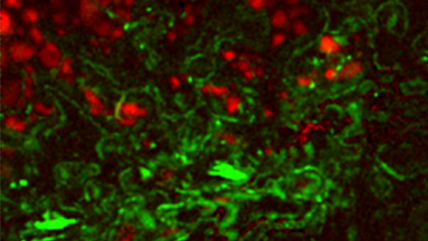Meteorites can reveal fragments of the history of the solar system's evolution. With many long-term asteroidal sampling missions, petrographic investigations of meteorite specimens will assist in studying asteroid samples. These rocky carbonaceous aggregates include snapshots of the early solar system and can contain calcium aluminum inclusions (CAIs) and corundum grains, which can be among the first solids to condense from the solar nebula. Understanding their complex formation history and subsequent thermodynamic events is critical in resolving early planetary stages. The growth patterns, grain boundaries, and subtle zonation from crystallization can indicate formation from nebular gasses. Cathodoluminescence investigation of a meteoritic specimen can reveal and map the presence of trace elements and grain boundaries and assist with mineralogical identification.
 |